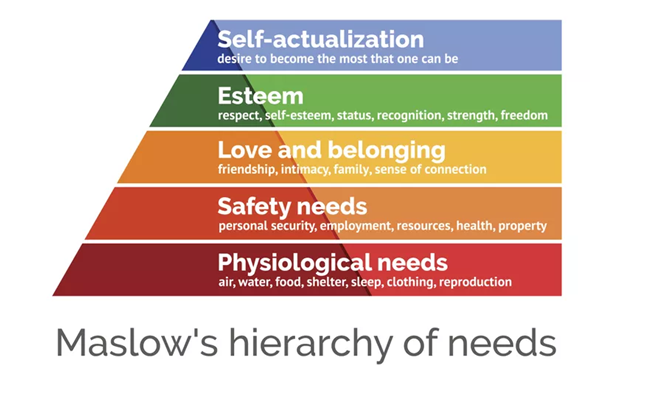
Here we are again with another weekend filled with festive vibes. Janmashtami is a festival celebrated across India with a lot of devotion and happiness. The most fund-to-do or thrilling aspect of this festival is the Dahi Handi, an enactment of baby Shri Krishna stealing butter and ghee from a hanging clay pot. In today’s world, young people form a human pyramid and attempt to reach out to a pot hanging high and break it as an enactment. The pot often carries reward/prize money for the participants. The pyramid needs to be strategically built to carry out this activity successfully. It should be more robust as the height increases, which needs to be coordinated well.
A similar paradox of the act itself of building a pyramid to achieve something in life is an exciting thought to be considered. As humans, we all have unlimited wants and desires; however, no matter how much we think about what we want, such as buying a good sports car, there is an unspoken priority list in our minds. An American psychologist, Abraham Maslow, was the first person to put a hierarchy of our needs and goals in a pyramid. He believed that every individual has a hierarchy of needs, which can be seen below in the image;

Consider this an example of someone who has just started working as a fresher and is at the very beginning of their career path.
Psychological needs/Basic Financial needs: When creating a path to the top, you must be able to meet basic financial needs before investing in a house or retirement. The first level of the pyramid suggests that you need support in fulfilling these needs and saving money in safe, less volatile and stable instruments. A simple liquid/overnight category fund can be considered for these goals under the first level.
Safety/Protection needs: Anything can happen anytime, and if one wants to move up the curve and take care of his and others’ first-level requirements, one needs to secure themselves. And for that, insurance can be a good option. Medical and term insurance are very much required before one considers the next level of the pyramid.
Love and Belonging: As per Maslow, the third level in the hierarchy is around feeling secure and halfway there as a sense of achievement. At this stage, investments for these goals need to be achieved somewhere between short-term sustenance and long-term goals. While short-term goals and other investment goals below this level are relatively safe and tied to capital preservation, one can look at a balance between risk and return. A combination of two asset classes, equity and debt, can go in conjunction very well per your risk profile.
Esteem: These are the years when you start planning your retirement. These kinds of investments are generally tied to building up your future. You cannot think of buying a second house if you have not first built a comfortable home. And for that, you are at the last stage of investing, that is, investing for long-term goals. From here on, every move you make will impact that time when you may not have a salaried income and when you can be financially independent. The quantum of risk that anyone can take at this stage, primarily through maintaining an asset allocation approach, is the highest.
Self-Actualisation: This stage can be called as financial independence stage. If you pass through all four levels above, here is the reward, the ultimate goal to be financially free and do whatever you can and need not be worried about money. Whether it be something like giving back to society, finding a lost passion, or achieving in an artistic or creative field, all of this can be achieved here.
As the sport of Dahi Handi educates us that you need plenty of practice, focus and coordination to achieve your goals in life, the above can be used as a framework and can be helpful to identify at which stage you are. This Janmashtami, discover yourself and move towards your financial independence.
Till then, Happy Janmashtami and Happy Investing!





















